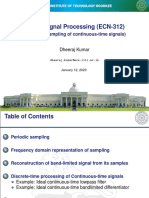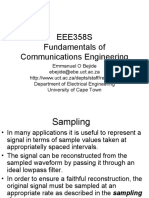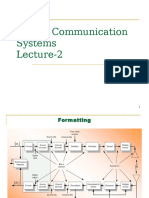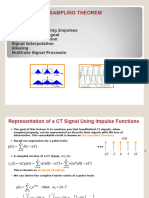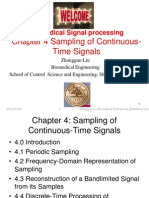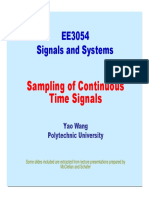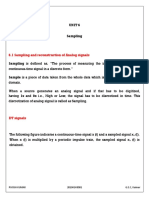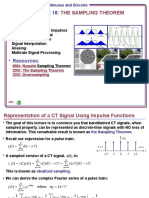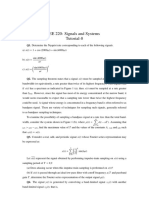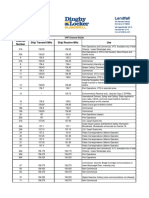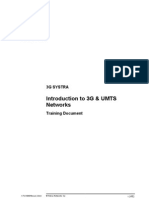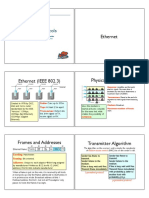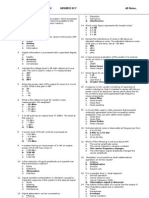0% found this document useful (0 votes)
15 views16 pagesCH 5 Sampling
Chapter 5 discusses Sampling Theory, focusing on the conversion of continuous-time signals to discrete-time signals through sampling, which must adhere to the Nyquist theorem to avoid distortion. It explains the reconstruction of signals using interpolation and emphasizes the importance of the Nyquist rate to prevent aliasing, a phenomenon that occurs when the sampling frequency is insufficient. Practical considerations highlight that real-world sampling may introduce distortions, necessitating the use of antialiasing filters to preserve signal integrity.
Uploaded by
Roshan PandeyCopyright
© © All Rights Reserved
We take content rights seriously. If you suspect this is your content, claim it here.
Available Formats
Download as PDF, TXT or read online on Scribd
0% found this document useful (0 votes)
15 views16 pagesCH 5 Sampling
Chapter 5 discusses Sampling Theory, focusing on the conversion of continuous-time signals to discrete-time signals through sampling, which must adhere to the Nyquist theorem to avoid distortion. It explains the reconstruction of signals using interpolation and emphasizes the importance of the Nyquist rate to prevent aliasing, a phenomenon that occurs when the sampling frequency is insufficient. Practical considerations highlight that real-world sampling may introduce distortions, necessitating the use of antialiasing filters to preserve signal integrity.
Uploaded by
Roshan PandeyCopyright
© © All Rights Reserved
We take content rights seriously. If you suspect this is your content, claim it here.
Available Formats
Download as PDF, TXT or read online on Scribd
/ 16








